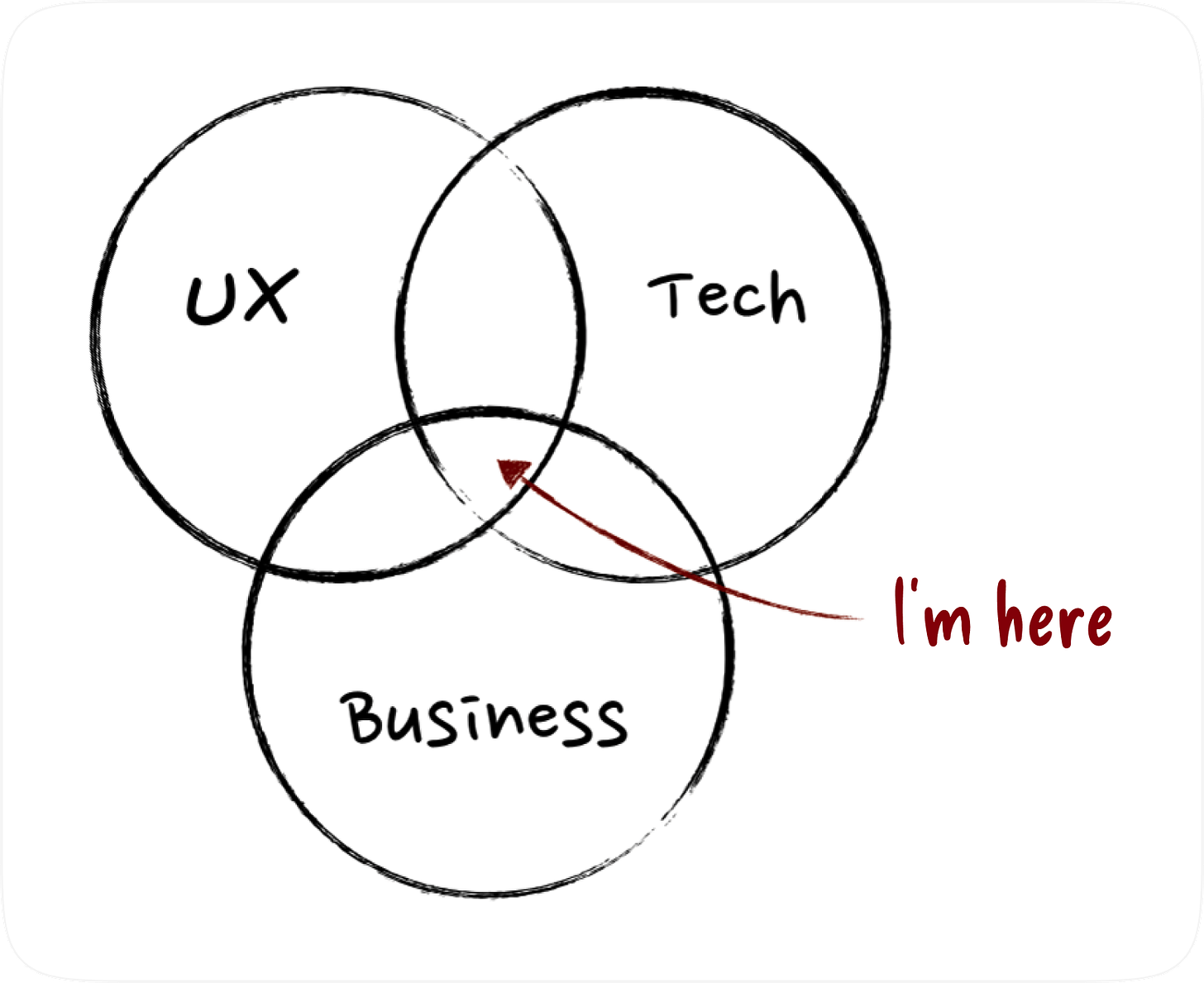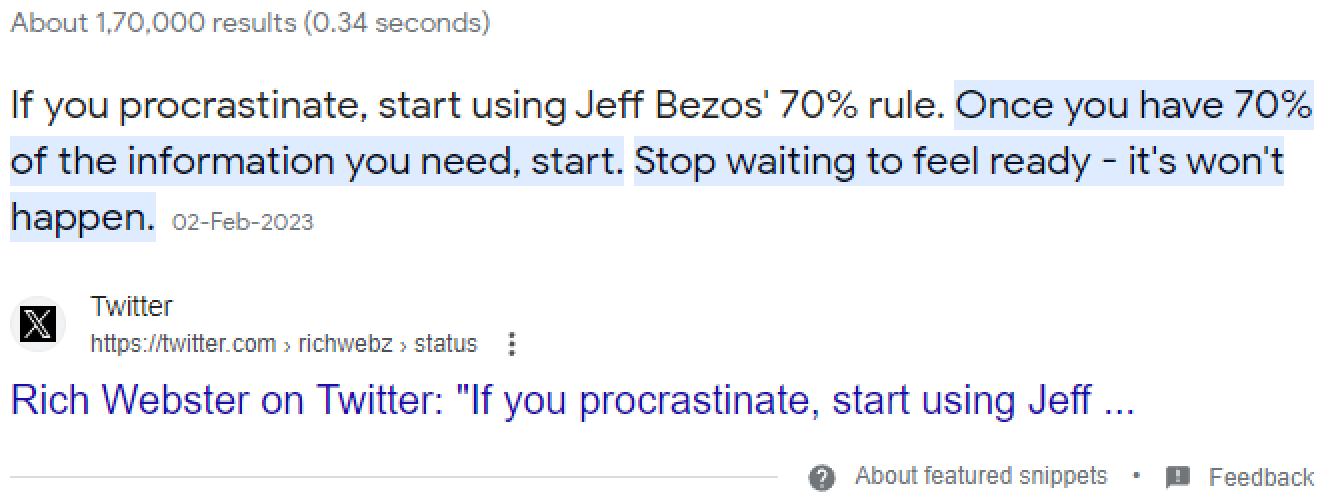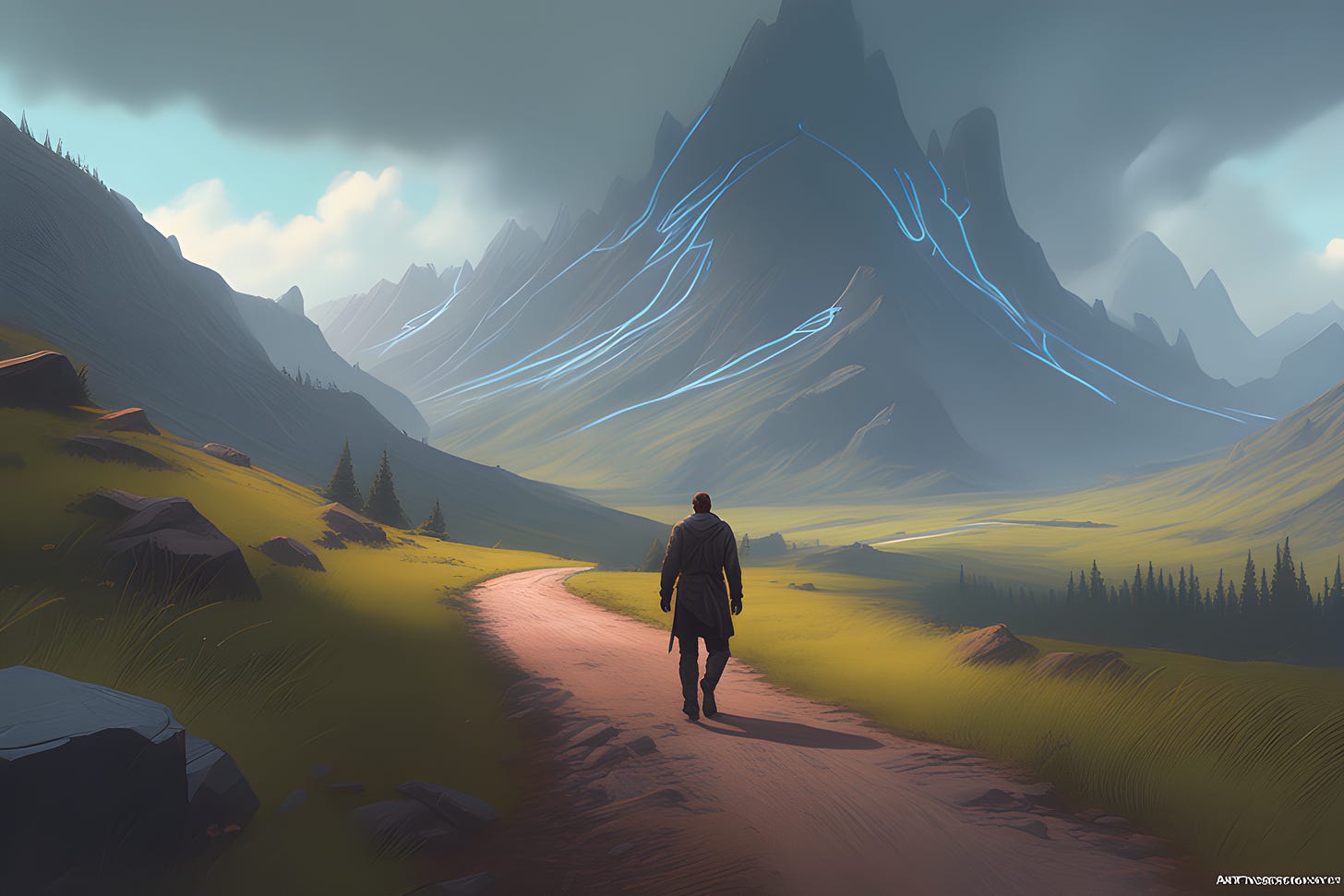I've been through a few phases in my career, from being a junior designer to being part of a "family" team, to being an autonomous and pragmatic designer. All of these experiences have shaped who I am right now.
If you plan to read further, you need to understand the journey below.
In the past week, we concluded a startup journey. I’m free now and concentrating on my life and career, and where to drive next. To be frank, it’s all foggy but I now know certain things about my professional characteristics, and it can be described as below.
I wrote a few things about it here: https://romio.substack.com/i/94377244/product-designer. And continuation is below.
There, I was representing both the user and the business. It is tough to take decisions sometimes but at the end of the day, I choose to move forward with the 70% rule.
Now I’m thinking, this journey was the one thing that was essential for me. I almost never interacted with real users until then. I didn't know the depth of how violently and emotionally some users will react if something is not working according to their knowledge and beliefs.
The reality
Before I join his journey almost everything was a manual process at his start-up.
He (Jijo - the founder) was a non-tech founder and obviously, he wasn’t familiar with CRM, live chat, and other third-party tools which can help a start-up without any cost.
I suggested things like this, and he agreed and with immediate effect, integrated the HubSpot chat tool into the platform.
So, all chat concerns were started to address in less than five minutes and on the go. We used the ready-to-go content with a link to our knowledge base in the snippet bar.
But one day we received an angry live chat session. Well, the word “angry” softens the blow. She was abusive because she couldn't figure out how things work on our platform. I saw this session notification and messaged him, he was also known of the situation. I was confused and choose to not reply, but then he thought, let’s reply and see. By then she found the email address from the website and an email received “without the abusive part”.
And then it started to make sense. Our platform was a simple tool but had some UX issues which triggered this chat and then email. It was easy to find but we weren’t looking, our priorities were different but realized that this is also something that needs to be looked into so added it into the backlog.
And another day we received another email from an aged person who is worried about a simple booking system because it is too much for him - but no offense, completely understandable.
I found this too technical for me to use! Day by day, the world is getting too complicated!
This was his starting paragraph, and he went through his concerns about AI and the pandemic limitations for the visit, etc. He ended with “this mad mad world”.
I have the screenshots for both these moments but I’m choosing not to post it here.
Reflection
Well, moments like this shaped my design thinking. A user persona is not something that is only for case studies. It should be considered in the brainstorming sessions in the first design stage of the product. No matter what, never dismiss this step.
I began to feel for these kinds of people. They shouldn't be left behind. They have every right to be angry and express themselves. As a business, it is our responsibility to address them accordingly. We need to get to know them as much as we can. Their needs, struggles, and lifestyles. What are they looking for?
Understanding business is a different one. In a start-up, there will not be an answer for everything. But we are free to find them and improve altogether. If it works, document the process and let everyone know.
Use sheets and docs simply as you can. If not, people will start to overwhelm, and it will defeat the purpose of organizing everything.
Sometimes people want everything in one place, and if we just act based on this requirement, they will again start to feel lost. It’s all about finding that balance. When to create a new file, when to announce, where to save, where to link, how to link (open in new tab or same tab) etc.
As a product designer, it is not our job to design whatever the client/user demands.
Our job is to research, wear the user and business lens, find problems and solutions, how this is going to impact the business, data to back up our idea, design, and then if needed, iterate.
Never design and implement something because one client asked for it. If the majority is asking for it, maybe consider it. Try to find out how it is going to help our business. Is it going to maintain our MRR or offer more value or is it just a good to have?
Finding our tasks and setting priorities is food for thought if you are going to jump into the start-up world.
Takeout
I talked about being an autonomous designer and being a pragmatic designer, right? Although these two are different things, they are not mutually exclusive. I learned to balance these two qualities. We need realities to identify the connecting part of these two. To face the realities, we need to take a risk by choosing start-ups. Yes, they are mostly uncertain, and maybe a sinking ship. But lessons are priceless.








